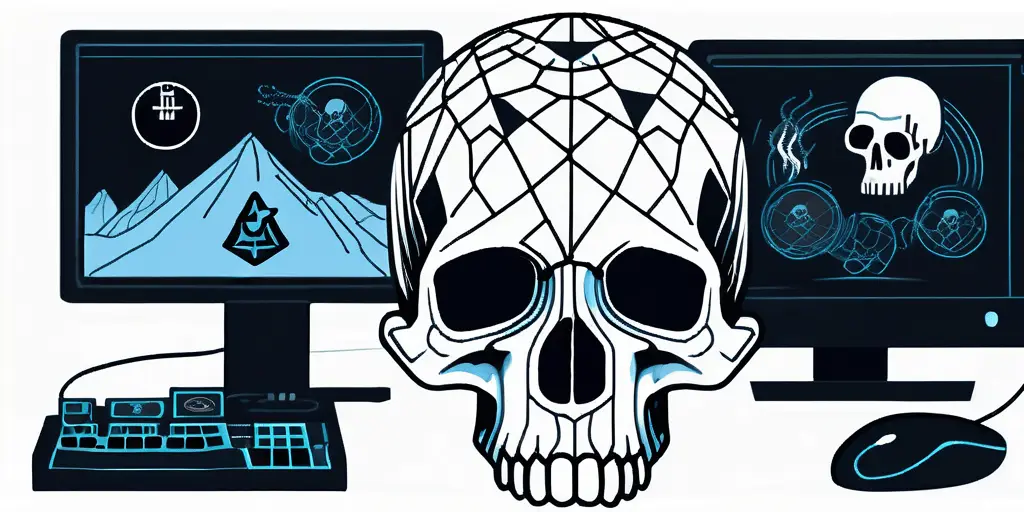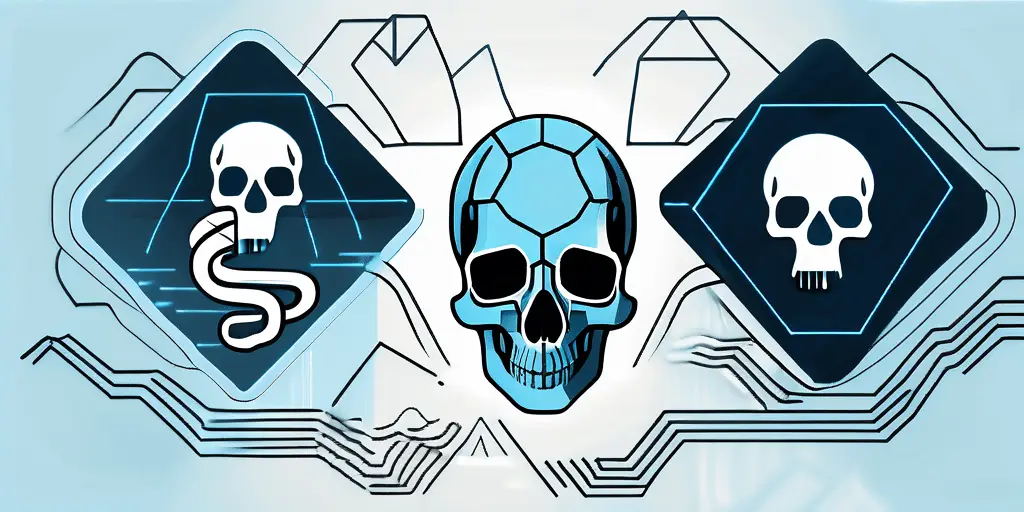Hackers have long been the enigmatic figures of the digital world, evoking both fear and fascination. Their clandestine activities have pushed the boundaries of technology and sparked debates on the ethics of cybersecurity. The Legion of Doom, an infamous group from the 1980s, serves as a historical benchmark for examining other prominent hacker collectives. In this article, we will delve into the origins, achievements, and influence of the Legion of Doom while also exploring the similar hacker groups that have emerged since its heyday.
Understanding the Legion of Doom: A Brief Overview
The Legion of Doom, often referred to as LOD, captivated the media and the public during a time when the concept of cybersecurity was still in its infancy. Formed in the early 1980s, this loose amalgamation of hackers, including individuals like Lex Luthor and The Mentor, aimed to challenge computer systems and expose vulnerabilities.
The Formation and Influence of Legion of Doom
The Legion of Doom emerged from the depths of the hacker community, a clandestine network of individuals driven by curiosity and a desire to push the limits of technology. The group quickly gained notoriety for its expertise in phone phreaking, a practice exploring and manipulating the intricacies of telephone systems.
Within the hacker culture of the time, the Legion of Doom exerted a significant influence. Their exploits were chronicled in ezines, such as “Phrack,” which served as a platform for sharing knowledge, discussing vulnerabilities, and debating cybersecurity ethics. These publications became a vital resource for hackers worldwide, fostering a sense of community and inspiring others to explore the uncharted territories of technology.
As the Legion of Doom’s reputation grew, so did their impact on the perception of hackers in society. They challenged the prevailing stereotypes and popularized the notion that hacking was not solely about malicious intent, but also about curiosity, exploration, and the pursuit of knowledge. By pushing the boundaries of technology, they aimed to spark conversations about the importance of system security and the need for constant improvement.
Notable Activities and Achievements of Legion of Doom
Despite their notoriety, the Legion of Doom primarily focused on exploring and understanding technology, rather than engaging in malicious activities. They aimed to expose vulnerabilities and prompt improvements in system security. Their methods were a mixture of curiosity, audacity, and a commitment to the free dissemination of information.
One of their most notable activities was their emphasis on phone phreaking, a practice that involved manipulating the phone network to make free long-distance calls. By demonstrating the insecurity of phone systems, the Legion of Doom sought to raise awareness about vulnerabilities and inspire improvements in telecommunications infrastructure. Their actions prompted telephone companies to invest in enhanced security measures, ultimately benefiting the general public.
However, the Legion of Doom’s achievements extended beyond phone phreaking. They were also influential in the early days of computer-based hacking, emphasizing the need for improved system security. Through their exploits, they highlighted the importance of robust cybersecurity measures and the potential consequences of overlooking vulnerabilities. Their activities played a crucial role in shaping the evolution of hacker culture and the field of cybersecurity, laying the groundwork for the advancements we see today.
The Chaos Computer Club: Germany’s Infamous Hackers
The Legion of Doom may have been iconic in the United States, but across the Atlantic, another prominent hacker collective emerged. The Chaos Computer Club (CCC), founded in Germany in 1981, was inspired by the ethos of the Legion of Doom and shared their passion for exploration.

Origins and Evolution of the Chaos Computer Club
Rooted in the ideals of freedom of information, the Chaos Computer Club set out to challenge authority and pioneer new avenues for technological exploration. The group’s early activities focused on computer security and encryption, often pushing the limits of legality for the sake of knowledge dissemination.
But the CCC’s impact went beyond hacking and encryption. As their influence grew, they began to delve into the world of politics, advocating for digital rights and privacy. Their commitment to these causes led to the creation of the “Digital Courage” campaign, which aimed to educate the public about the importance of online privacy and the potential dangers of surveillance.
In addition to their political activism, the CCC also became known for their annual hacker conference, the Chaos Communication Congress. This event, which attracts thousands of attendees from around the world, serves as a platform for hackers, researchers, and activists to share knowledge, discuss emerging technologies, and debate the ethical implications of their work.
Significant Hacks and Contributions to Cybersecurity
The Chaos Computer Club’s hacking exploits were not aimed at malicious intent but rather as a means of exposing vulnerabilities and advocating for improved security practices.
A notable example of their activities was the “Hansa Hack” in 1988. By infiltrating the email system of the U.S. military, the CCC aimed to highlight the lack of security surrounding sensitive information. This breach sparked a debate on the necessity of robust security measures in an increasingly connected world.
But the CCC’s contributions to cybersecurity extended far beyond their hacking endeavors. Through their research and analysis of encryption algorithms, they have uncovered vulnerabilities that have led to significant improvements in cryptographic techniques. Their findings have not only benefited individuals and businesses, but also governments and organizations worldwide, helping to safeguard sensitive data and protect against cyber threats.
Furthermore, the CCC has played a crucial role in raising awareness about the importance of cybersecurity among the general public. Through their workshops, presentations, and publications, they have helped educate people about the risks of online activities and the steps they can take to enhance their digital security.
LulzSec: The Pranksters of the Cyber World
As the digital landscape continued to evolve, so did the motivations and methodologies of hacker groups. LulzSec, an offshoot of the international hacktivist collective known as Anonymous, emerged as a unique force in the online world, blending technical expertise with a mischievous sense of humor.

The Rise and Fall of LulzSec
LulzSec burst into the spotlight in 2011 with a series of high-profile attacks that targeted various organizations, including Sony, the CIA, and even the FBI. Their activities were driven by the pursuit of “lulz” or laughter, aiming to expose security flaws while also entertaining themselves and others.
However, their reign was short-lived, with several key members eventually arrested and brought to justice. LulzSec’s brief but impactful tenure reshaped public perception, highlighting both the vulnerabilities of digital infrastructure and the potential consequences of engaging in malicious hacking activities.
LulzSec’s Most Notorious Hacks
Although LulzSec’s existence was relatively brief, their bag of pranks left a lasting impact on the cybersecurity landscape. Some of their most notorious hacks included breaching the databases of Sony Pictures, compromising the security of major gaming companies, and infiltrating government websites.
One of their most audacious exploits involved hacking into the website of PBS, a major U.S. broadcaster, and publishing a false news article claiming that rapper Tupac Shakur was still alive. This prank highlighted the potential repercussions of compromised websites and the importance of robust security practices in the face of ever-evolving threats.
One of the most intriguing aspects of LulzSec’s activities was their ability to exploit seemingly impenetrable systems. Their hacks were not only technically impressive but also carried a certain level of audacity that captivated both the cybersecurity community and the general public. The group’s members, operating under pseudonyms, were able to navigate through complex networks, bypassing firewalls and encryption protocols with ease.
Moreover, LulzSec’s attacks were not solely motivated by personal gain or political agendas. They were driven by a desire to expose the vulnerabilities of organizations that often claimed to have impenetrable security measures in place. By targeting high-profile entities such as Sony and the CIA, LulzSec aimed to challenge the notion that no system is truly secure.
However, as with any game of cat and mouse, the authorities eventually caught up with LulzSec. Several key members were apprehended, leading to the dismantling of the group. This turn of events served as a stark reminder that even the most skilled hackers are not invincible and that the consequences of their actions can be severe.
APT28: The Russian Cyber Espionage Group
While the Legion of Doom, the Chaos Computer Club, and LulzSec emphasized ethical hacking or mischievous activities, a new breed of hackers emerged with more sinister intentions. One such group is APT28, also known as Fancy Bear, a Russian cyber espionage collective linked to various high-profile attacks.
Unveiling APT28: Structure and Objectives
APT28 operates as a well-structured and disciplined organization, allegedly backed by elements of the Russian government. Their primary objective is to conduct cyber espionage activities on behalf of Russia, targeting government institutions, political organizations, and even multinational corporations.
The group’s tactics involve targeted phishing campaigns, malicious software deployment, and cyber operations aimed at gaining unauthorized access to sensitive information. Their activities highlight the potential impact of state-sponsored hacking groups on global security and diplomatic relations.
APT28’s Role in Global Cyber Espionage
APT28’s actions have reverberated across the international stage, with multiple governments and intelligence agencies attributing various cyberattacks to the group. Notable incidents include the hacking of the Democratic National Committee (DNC) during the 2016 U.S. presidential election and the targeting of various organizations associated with geopolitical conflicts.
These attacks have not only exposed the vulnerabilities of political systems but have also raised concerns about the potential for cyber warfare between nations. APT28’s activities serve as a stark reminder of the evolving threat landscape, with state-sponsored hacking groups leveraging their capabilities for strategic advantage.
Furthermore, APT28’s sophisticated techniques and extensive resources have allowed them to infiltrate networks and remain undetected for extended periods. Their ability to bypass security measures and exploit vulnerabilities has made them a formidable force in the world of cyber espionage.
APT28’s operations are not limited to a specific region or target. They have been known to target organizations and individuals across the globe, including Europe, Asia, and North America. Their wide-ranging reach demonstrates their determination to gather intelligence and influence events on a global scale.
In addition to their cyber espionage activities, APT28 has also been involved in disinformation campaigns, spreading false narratives and manipulating public opinion. By leveraging social media platforms and other online channels, they aim to sow discord and confusion, furthering their objectives and undermining trust in democratic processes.
The international community continues to grapple with the threat posed by APT28 and other state-sponsored hacking groups. Efforts to strengthen cybersecurity measures, enhance information sharing, and develop robust response strategies are underway, but the battle against these sophisticated adversaries remains an ongoing challenge.
The Dark Overlord: The Extortionists of the Internet
While hacking groups often leverage their technical skills for different purposes, one group stands out for their notoriety in the realm of cyber extortion – The Dark Overlord. They represent a more modern iteration of hacker collectives, employing their expertise to exploit individuals and organizations for financial gain.
The Dark Overlord’s Modus Operandi
The Dark Overlord’s primary method revolves around gaining unauthorized access to networks and stealing sensitive information. They then extort the victims by threatening to release the pilfered data unless their demands for payment are met.
Targets of The Dark Overlord have included healthcare organizations, educational institutions, and entertainment companies. The group’s activities highlight the increasingly lucrative and dangerous cybercrime ecosystem where personal data becomes a valuable commodity.
Impact of The Dark Overlord’s Activities
The Dark Overlord’s actions have serious consequences that extend beyond financial losses. By breaching networks and releasing sensitive information, the group jeopardizes the privacy and security of individuals, tarnishing the reputations of targeted organizations, and instilling fear in the wider community.
These incidents underscore the need for robust cybersecurity measures, resilient network architectures, and proactive defense strategies to combat the evolving threat landscape represented by groups like The Dark Overlord.
Comparing and Contrasting Hacker Groups
While the Legion of Doom, the Chaos Computer Club, LulzSec, APT28, and The Dark Overlord differ significantly in their objectives and methodologies, they all contribute to a rich tapestry of hacker culture and serve as a reflection of the broader technological landscape. Comparing these groups allows for a deeper understanding of their motives, techniques, and the impact they have had on society.
Similarities and Differences in Motives
One common thread among hacker groups is the pursuit of knowledge and curiosity about technology. Whether driven by a desire to explore and expose vulnerabilities, disrupt systems for personal amusement, or serve political agendas, these groups all share a passion for challenging the status quo.
However, their motivations and intentions diverge significantly. Ethical hacking collectives like the Legion of Doom and the Chaos Computer Club target insecurity to advocate for improved systems, while groups like LulzSec seek entertainment and the exposure of vulnerabilities. State-sponsored groups such as APT28 pursue geopolitical objectives, and criminal entities like The Dark Overlord prioritize financial gain through extortion.
Varied Techniques and Strategies Employed
The Legion of Doom relied heavily on phone phreaking, while the Chaos Computer Club focused on encryption and security research. LulzSec gained notoriety through high-profile hacks, and APT28 engaged in sophisticated cyber espionage. The Dark Overlord’s modus operandi revolves around leveraging stolen data for extortion.
These different approaches highlight the breadth of tools and techniques available to hackers. While some focus on exploiting technical weaknesses, others utilize social engineering or intricate network infiltration strategies. The constantly evolving tactics employed by hacker groups necessitate continuous vigilance and adaptation in the field of cybersecurity.
The Evolution of Hacker Groups Over Time
As technology has advanced, hacker groups have adapted to leverage new tools and exploit emerging vulnerabilities. The digital landscape has witnessed a transformative shift, with a cat-and-mouse game between hackers and cybersecurity professionals, each seeking to outmaneuver the other.

The Changing Landscape of Cyber Threats
Hacker groups have evolved alongside technological advancements, with each new development presenting both opportunities and challenges. As networks became more interconnected and reliant on digital infrastructure, hacker groups capitalized on the vulnerabilities exposed by this shifting landscape.
From the Legion of Doom’s exploits within telephone systems to APT28’s state-sponsored cyber espionage efforts, the threats faced by individuals, corporations, and governments have become increasingly sophisticated and widespread. This necessitates a constant reassessment of security protocols and a proactive approach to mitigating potential risks.
Future Predictions for Hacker Groups
Looking ahead, cybersecurity professionals must anticipate the future implications of emerging technologies on hacker groups. The rise of artificial intelligence, the proliferation of the Internet of Things, and the increasing integration of technology into everyday life present both opportunities and challenges.
As these technological frontiers expand, so too will the potential attack surface for hackers. The fusion of privacy concerns, political tensions, and socioeconomic factors will likely shape the motivations and tactics of hacker groups to come. A proactive approach that combines advanced security measures, ethical hacking practices, and international collaboration will be essential to staying ahead of these evolving threats.
Conclusion
The Legion of Doom serves as a historical reference point for exploring the world of hacker groups and their influence on cybersecurity. From the curious pursuit of technological exploration by groups like the Chaos Computer Club, the entertaining exploits of LulzSec, the geopolitical motivations of APT28, to the malicious extortion tactics employed by The Dark Overlord, each collective contributes to the ever-evolving narrative of hacking in the digital age.
As technology continues to advance, it is crucial to remain vigilant and stay informed about the evolving tactics and motivations of hacker groups. By understanding their origins, achievements, and impact, we can better navigate the complex landscape of cybersecurity and implement robust measures to safeguard our digital infrastructure.
As the digital landscape continues to evolve, the need for robust cybersecurity measures becomes increasingly critical. Whether you’re concerned about the vulnerabilities highlighted by groups like the Legion of Doom or seeking to protect your organization against the sophisticated tactics of modern hacker collectives, Blue Goat Cyber is here to help. Specializing in a range of B2B cybersecurity services, including medical device cybersecurity and various compliance penetration testing, our veteran-owned business is dedicated to securing your operations. Contact us today for cybersecurity help and partner with a team that’s as passionate about your security as you are about your business.


